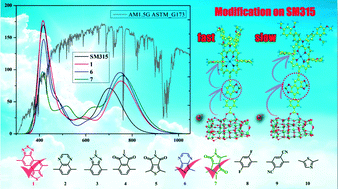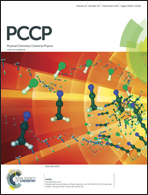Rational modifications on champion porphyrin dye SM315 using different electron-withdrawing moieties toward high performance dye-sensitized solar cells†
Abstract
Ten porphyrin sensitizers with different electron-withdrawing groups derived from the best sensitizer SM315 were investigated by means of the density functional theory (DFT) and time-dependent DFT calculations. To this end, major factors affecting the performance of the cell, including light harvesting, electron injection, dye regeneration, and conduction band energy shift are taken into consideration. Especially, the calculated distance (r) from the electron recapture center to the semiconductor surface is used to probe the charge recombination process. In addition, considering the complexity of the porphyrin sensitizers' absorption, the maximum short circuit current density (Jmaxsc) is determined for investigating the light harvesting ability quantitatively. We find that when compared to SM315 with 2,1,3-benzothiadiazole, 1 with naphtho[1,2-c:5,6-c]bis[1,2,5]thiadiazole shows better performance due to both larger Jmaxsc and r, and 7 with diketopyrrolopyrrole could also be a promising candidate due to the much larger Jmaxsc and comparable r.


 Please wait while we load your content...
Please wait while we load your content...